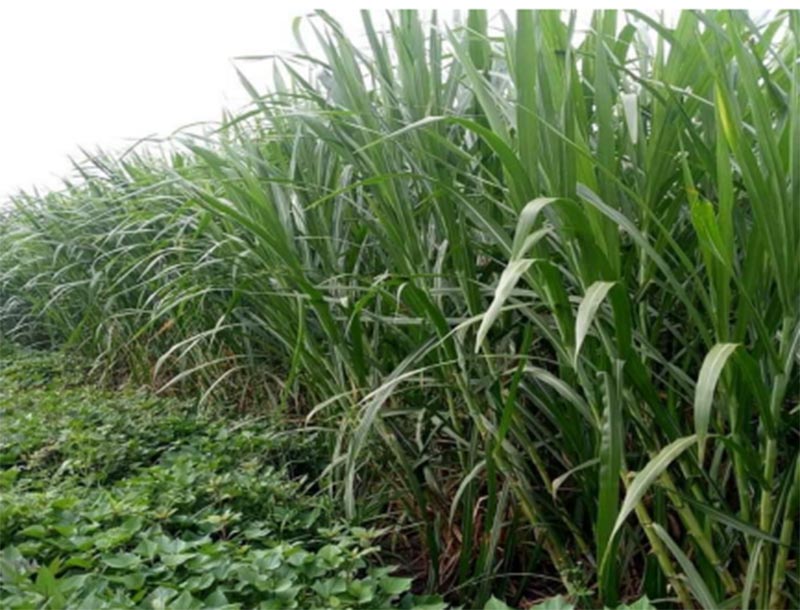Napier grass can be intercropped with forage legumes such as Silver leaf desmodium (Desmodium uncinatum), Greenleaf desmodium (Desmodium Intortum), Stylo (Stylosanthes guyanensis) Centro (Centrosema pubescens), Siratro (Macroptilium atropurpureum) and others.

The most compelling reasons to use mixtures containing both forage legumes and Napier forage grasses are related to the benefits of plant diversity and on sward productivity, yield persistence, and livestock nutrition.
• Nodules on forage legume roots are able to fix Nitrogen from the air for their own nutrition and can transfer up to 50 kg/ha to the grasses growing in association. Nodules develop on roots of forage legumes (Source: NET)
• Because of their tap roots, some forage legumes like alfalfa are able to absorb water from deeper in the soil than grasses, and therefore have greater drought tolerance than grasses.
• An intercrop of grass with forage legumes has the potential to produce higher total dry matter yields and protein content, suppress weeds and improve soil fertility.
• Integration of forage legumes into a Napier grass fodder system provides an effective means of improving dairy productivity.
Establishing a Mixture of Napier Grass and Forage Legumes
Pre-planting Seed Treatment of Forage Legume Seed: Many pasture legume seeds have hard seed coats, which are impermeable to water. This results in poor germination and establishment. For details on legume seed pre-planting treatment read Kabirizi (2023).
Sowing Napier Grass and Forage Legumes: Forage legume seed is planted in rows between Napier grass. Since legumes are nitrogen fixers this will contribute to high fodder yield and quality. Apply Single Super Phosphate fertilizers to the forage legumes to improve nodulation (the process of forming root nodules containing symbiotic bacteria)
Compiled by Dr Jolly Kabirizi





